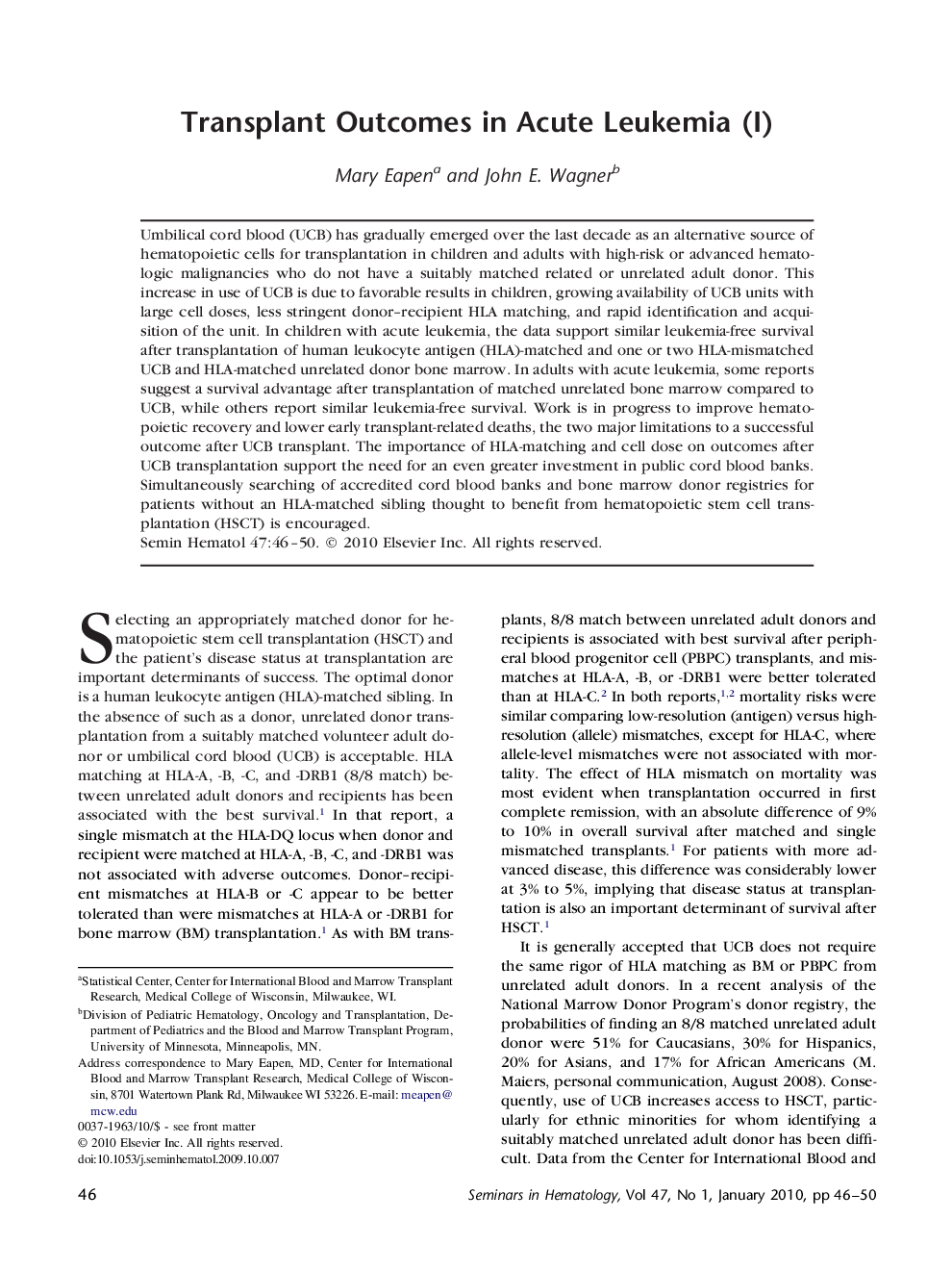| Article ID | Journal | Published Year | Pages | File Type |
|---|---|---|---|---|
| 3333769 | Seminars in Hematology | 2010 | 5 Pages |
Abstract
Umbilical cord blood (UCB) has gradually emerged over the last decade as an alternative source of hematopoietic cells for transplantation in children and adults with high-risk or advanced hematologic malignancies who do not have a suitably matched related or unrelated adult donor. This increase in use of UCB is due to favorable results in children, growing availability of UCB units with large cell doses, less stringent donor-recipient HLA matching, and rapid identification and acquisition of the unit. In children with acute leukemia, the data support similar leukemia-free survival after transplantation of human leukocyte antigen (HLA)-matched and one or two HLA-mismatched UCB and HLA-matched unrelated donor bone marrow. In adults with acute leukemia, some reports suggest a survival advantage after transplantation of matched unrelated bone marrow compared to UCB, while others report similar leukemia-free survival. Work is in progress to improve hematopoietic recovery and lower early transplant-related deaths, the two major limitations to a successful outcome after UCB transplant. The importance of HLA-matching and cell dose on outcomes after UCB transplantation support the need for an even greater investment in public cord blood banks. Simultaneously searching of accredited cord blood banks and bone marrow donor registries for patients without an HLA-matched sibling thought to benefit from hematopoietic stem cell transplantation (HSCT) is encouraged.
Related Topics
Health Sciences
Medicine and Dentistry
Hematology
Authors
Mary Eapen, John E. Wagner,
